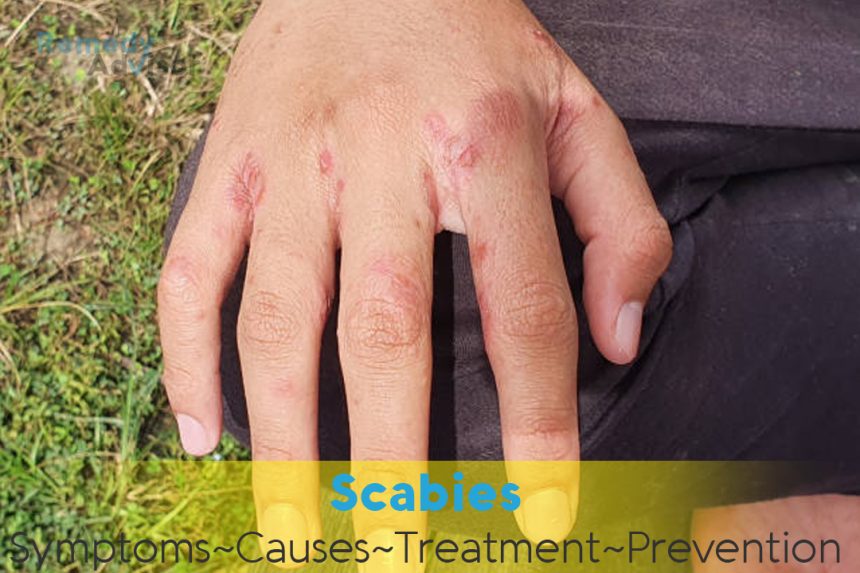What is it
Scabies is a common contagious disorder caused by a microscopic burrowing mite, which digs under the uppermost layer of skin and lays eggs. The mite cannot jump or fly but is passed from host to host by direct personal contact. Generally, within two to three weeks after the eggs have been laid, the infected person develops a fierce allergic reaction characterized by an itchy rash that can eventually become inflamed. Scratching itchy areas may trap the mites and eggs under the fingernails, and they then get transmitted to other parts of the body.
In some people the symptoms are relatively mild, but in others the itching can be quite intense. Adults and older children seldom develop eruptions above the neck; in infants and small children, however, eruptions can occur over the entire body.
Symptoms
- Small, red, itchy blisters or pustules that develop in soft skin areas such as between the fingers, around the wrists, and on the lower abdomen, genitals, and buttocks.
- Severe itching that is often worse at night and following a hot bath or shower.
- In some cases dotted thin lines of raised red skin typically between the fingers, along the belt line, on the penis, and around the nipples in women indicating where scabies mites have burrowed.
What causes it
Scabies is caused by the female human scabies mite (Sarcoptes scabiei), a microscopic eight-legged creature that burrows into the upper layer of skin. If undetected and untreated, the mite will lay up to three eggs daily for up to 60 days. At any one time an infected person may have 10 to 15 female mites on the body.
Scabies can be picked up through skin-to-skin contact with an infected person, contact with contaminated clothing, or by sleeping in bedding that is contaminated. Children under the age of two are most at risk, followed by mothers and other family members who have frequent, close physical contact with the youngsters. Unsanitary and overcrowded living conditions increase the risk of contracting the ailment, but the mites can thrive in all sorts of communities.
Scabies is also a common problem with older Americans, especially those who live in long-term-care facilities, since they often have weakened immunological defenses. People with immune system deficiencies, especially those with HIV or AIDS, are at risk as well.
What if you do nothing
Though not harmful, scabies is uncomfortable. Moreover, if you don’t take steps to eradicate the mite that causes the ailment, the condition will worsen and you could easily contaminate others.
Home remedies
Dried chrysanthemum flowers have been used since the late nineteenth century for scabies treatment. The active ingredient of the flowers is pyrethrum, which is still used in several nonprescription medications.
Unfortunately, these low-strength formulations frequently aren’t strong enough to treat scabies effectively. Several prescription medications are available that eliminate the mites, generally within two weeks.
When treating scabies, close family members should also be treated preventively with one application of the scabies medicine, as should others who are in close contact with the infected person.
In addition to applying a prescription scabicide, here is what you need to do to get rid of scabies.
Decontaminate
All bedding, towels, and any clothing used for the three days prior to treatment should be washed in extremely hot water to kill the mites. Vacuum all mattresses, chairs, rugs, and floors and then discard the vacuum cleaner bag. Place all shoes in plastic bags and keep them sealed for seven days before wearing them again.
Get rid of the itch
Significant itching may continue for several weeks after the mites are eliminated, owing to an allergic skin reaction to the creatures. Take frequent cool baths and don’t use strong soap. For temporary relief, use 1 percent hydrocortisone cream or calamine lotion on all itchy areas.
Prevention
Be scrupulous about personal hygiene
Bathe regularly and wash clothes and bedding often.
Avoid the infection
Refrain from physical contact with persons, clothing, or bedding that may be infested with scabies mites.







